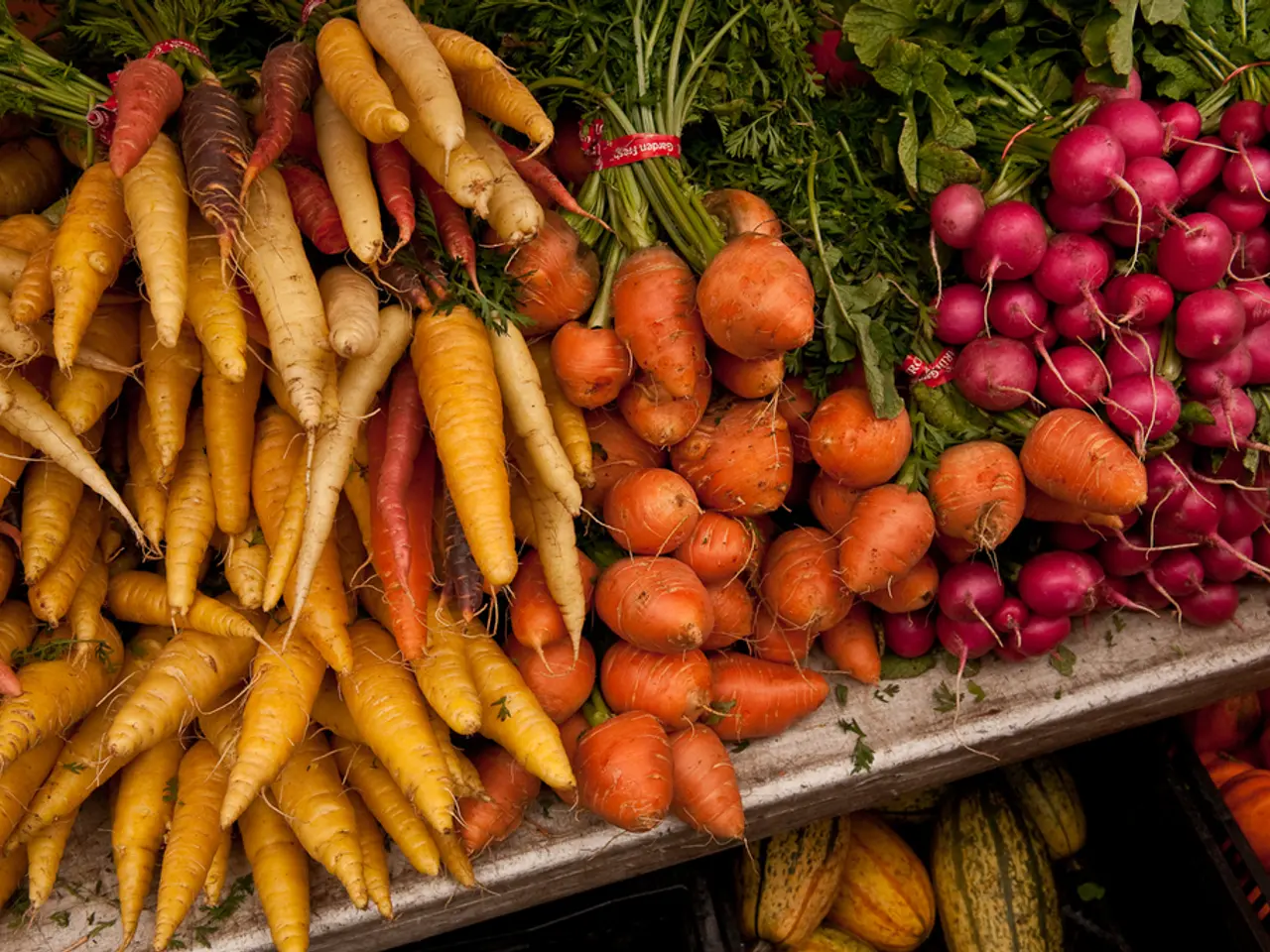Optimal Crop Rotation Strategies for Enhanced Vegetable Yields
In the realm of farming, sustainability is more than just a buzzword—it's a commitment to practices that are beneficial for the earth and our future. One such practice is crop rotation, a method that offers a multitude of advantages for both gardeners and farmers alike.
Crop rotation is a farming technique that involves growing different types of crops in a specific area over time. This practice is instrumental in maintaining soil health and plant health, as it allows for the balanced use of nutrients and prevents depletion.
Seasonal choices also play a significant role in farming, with some vegetables thriving in certain seasons. For instance, lettuce flourishes in early spring, while pumpkins ripen in late summer. However, the choice of crops is not solely based on seasonality. Companion planting, where certain plants are grown together for mutual benefit, is another essential aspect of sustainable farming. Tomatoes, for example, benefit from being planted alongside basil and marigold, as these plants help repel pests and enhance flavor.
Effective crop rotation strategies focus on improving soil health, controlling pests and diseases, and managing nutrient cycles. Key approaches include rotating crops by plant families and nutrient needs, including nitrogen-fixing legumes, varying root depths, using multi-year rotation plans with fallow periods, and controlling pests and diseases through rotation.
By rotating crops, farmers and gardeners can reduce pest and disease pressure, improve soil structure, and ultimately increase vegetable yields sustainably. Diversity in vegetable choices is also crucial, as it keeps the soil healthy and the garden lively. For example, carrots benefit from being planted alongside onions and leeks, as they deter carrot flies.
Minimal tillage and mulching are additional techniques that help maintain the soil's structure and the life within it, leading to increased vegetable yields. Weed reduction is another benefit of crop rotation, as some weeds thrive with certain plants, and by switching crops, it helps manage weeds.
Organic gardening tips, such as using natural fertilizers, planting cover crops, and encouraging beneficial insects, can further support sustainability in farming. Soil testing is also essential to understand its health, and simple methods like using a soil test kit are available.
In conclusion, crop rotation is a powerful tool in sustainable farming. By optimizing nutrient cycling, reducing pest and disease pressure, improving soil structure, and increasing vegetable yields, crop rotation helps keep the soil healthy, prevents pests and diseases, and ensures plants get the nutrients they need. Embracing these practices not only benefits our environment but also ensures a bountiful harvest for years to come.
- In the realm of home-and-garden activities, sustainable living is not just a concept—it's a lifestyle focused on practices that benefit both the earth and our future.
- By employing crop rotation in one's garden, home gardeners can reduce pest and disease pressure, improve soil structure, and ultimately increase vegetable yields sustainably, thus promoting a sustainable-living lifestyle.
- Gardening tips like rotating crops, using natural fertilizers, planting cover crops, and encouraging beneficial insects are valuable for those keen on incorporating sustainability into their home-and-garden practices, thereby fostering a lifestyle that is mindful of the earth's resources and its future.




